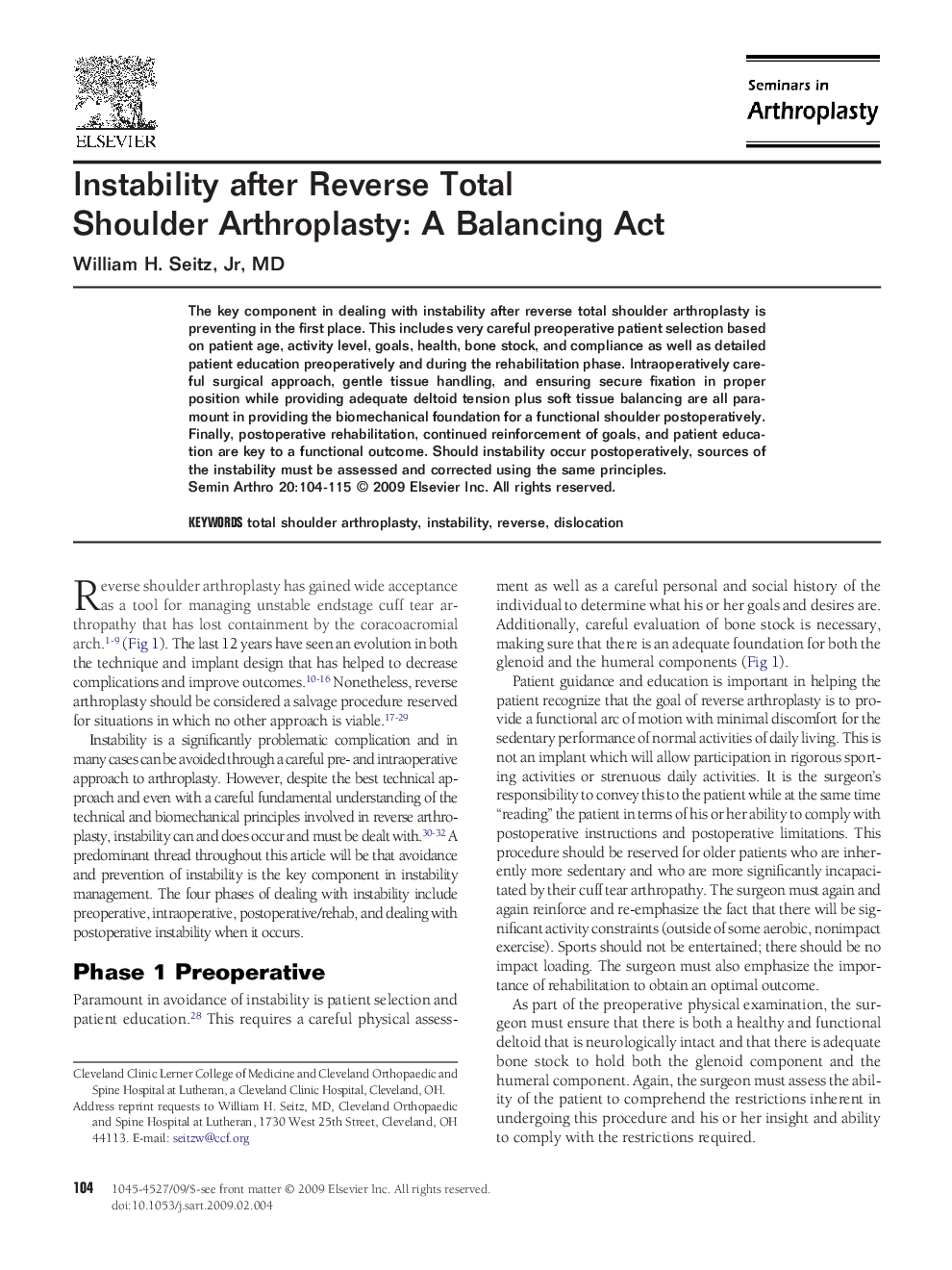| Article ID | Journal | Published Year | Pages | File Type |
|---|---|---|---|---|
| 4094290 | Seminars in Arthroplasty | 2009 | 12 Pages |
The key component in dealing with instability after reverse total shoulder arthroplasty is preventing in the first place. This includes very careful preoperative patient selection based on patient age, activity level, goals, health, bone stock, and compliance as well as detailed patient education preoperatively and during the rehabilitation phase. Intraoperatively careful surgical approach, gentle tissue handling, and ensuring secure fixation in proper position while providing adequate deltoid tension plus soft tissue balancing are all paramount in providing the biomechanical foundation for a functional shoulder postoperatively. Finally, postoperative rehabilitation, continued reinforcement of goals, and patient education are key to a functional outcome. Should instability occur postoperatively, sources of the instability must be assessed and corrected using the same principles.
